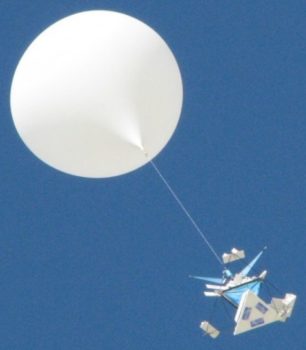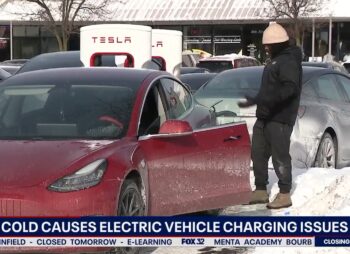
For those who follow the heated squabbling of climate alarmists and skeptics, this has been a bombshell week. John Bates, a recently retired scientist at the National Oceanic and Atmospheric Administration (NOAA), has revealed that a 2015 study by the government agency was riddled with bias and questionable methodology.
More specifically, NOAA released a study in 2015 announcing that we haven’t had a “pause” in global warming over the past 15 years. Although the study flatly contradicted data from satellites and weather balloons documenting a net flatlining of temperatures, its findings were cited prominently at the 2015 Paris climate talks. The resulting Paris accord called for major decarbonization efforts worldwide.
According to Bates, the “pausebuster” study, led by former NOAA Director Thomas Karl, was rushed to publication before underlying data issues were resolved. Bates says that Karl was “insisting on decisions and scientific choices that maximized warming and minimized documentation.”
It’s interesting that the Obama administration rushed to embrace the Karl study, though, since a subsequent paper in Nature Magazine disagreed with the NOAA report, saying the observed “slowdown” in warming is real, and occurred at a time when carbon dioxide emissions have been rising steadily.
Even the U.N. Intergovernmental Panel on Climate Change (IPCC) has stated that “the rate of warming over the past 15 years … is smaller than the rate calculated since 1951.”
Subsequent rumblings about possible bias at NOAA prompted Rep. Lamar Smith (R-Texas) to investigate the matter in 2016, earning the veteran congressman considerable criticism. In taking on NOAA, Smith was accused of being “anti-science” and trying to “intimidate” the scientific community. The U.K.’s Guardian even referred to him as a “witch hunter.”
Now, however, it looks like Smith was absolutely right to question whether taxpayer money was used in a dubious manner.
It’s significant that satellite and weather balloon readings of global temperatures have steadily borne out observations that net temperatures have remained relatively stable since the start of the 21st century. However, NOAA said that its 2015 study used “significant improvements in the calculation of trends” to assemble “improved versions of both sea surface temperature and land surface air temperature datasets.”
But NOAA engaged in two very questionable practices in order to arrive at their new and improved graph of temperatures. They included seawater temperature measurements collected from the engine intake valves of ocean-going vessels, and they estimated Arctic Ocean temperatures by extrapolating from nearby land areas.
The result? When compared to satellite and weather balloon data, their “new” findings eliminated the net flatlining of 21st century global temperatures and instead showed a series of scraggly rising temperature lines.
Essentially, NOAA wanted the American people to believe that eliminating satellite data, while including readings from engine thermometers, would yield a more accurate temperature record. For the casual observer, all of this might seem plausible. But clearly NOAA engaged in a questionable methodology.
Most notably, thermometers installed in the intake valves of ocean-going vessels aren’t intended for such precise measurements of temperature. This becomes all the more apparent when one considers, for example, that 2016 was declared the “hottest year on record” by a mere 0.01 degrees Celsius.
But there’s also the possibility of “heat contamination” from the ships themselves. Seawater intake valves also pose a big another problem, as well. They vary in depth according to the size and shape of a vessel’s hull — presenting a problem for collecting samples of uniform depth.
Interestingly, NOAA gave priority to these ship readings. As one of the report’s authors explained, “[D]ata collected from buoys are cooler than ship-based data. In order to accurately compare ship measurements and buoy measurements over the long-term, they need to be compatible. Scientists have developed a method to correct the difference between ship and buoy measurements, and we are using this in our trend analysis.”
How exactly did NOAA adjust for this discrepancy? They added 0.12 degrees Celsius (0.25°F) to each buoy to bring their measurements in line with readings taken from ship gauges.
It’s somewhat amusing to look at NOAA’s website, though, and see their justification for using engine intake readings. Essentially, they portray such measurements as a step forward in scientific progress, thanks to the “change from ships throwing a bucket over the side, bringing some ocean water on deck, and putting a thermometer in it, to reading the thermometer in the engine coolant water intake.”
But NOAA took another liberty, as well. They decided to estimate Arctic Ocean temperatures based on neighboring land areas. Simply put, there are only a limited number of temperature monitoring stations in the Arctic.
As such, NOAA simply extrapolated Arctic Ocean temperatures from neighboring land-based measurements. However, much of the Arctic Ocean can remain ice-covered throughout the summer, and imposing warmer land surface data on areas of sea ice will inevitably skew temperature readings.
But this is what NOAA undertook in order to make the case for concerted worldwide action against fossil fuel use. And while many climate-watchers had suspicions about the validity of NOAA’s approach, it took Bates’ revelations to help confirm the bias that drove their findings.
One has to wonder why, if the case for man-made warming is so tenuous, would alarmists resort to such questionable methods? Wouldn’t the more obvious recourse be to question the hypothesis itself? But such is the state of the contemporary global warming debate. Hundreds of advocacy groups are engaged in an all-out campaign to certify the premise of anthropogenic warming.
And with salaries, grants, and reputations on the line, it’s doubtful that truth and scientific accuracy will get in the way of their ultimate quest. The American people deserve better, though, noting the large sacrifices that will be asked of them if the United States continues to follow the edicts of the Paris accord.
Steven Capozzola has served as media director for both the Alliance for American Manufacturing (AAM) and the U.S. Business & Industry Council (USBIC).
















